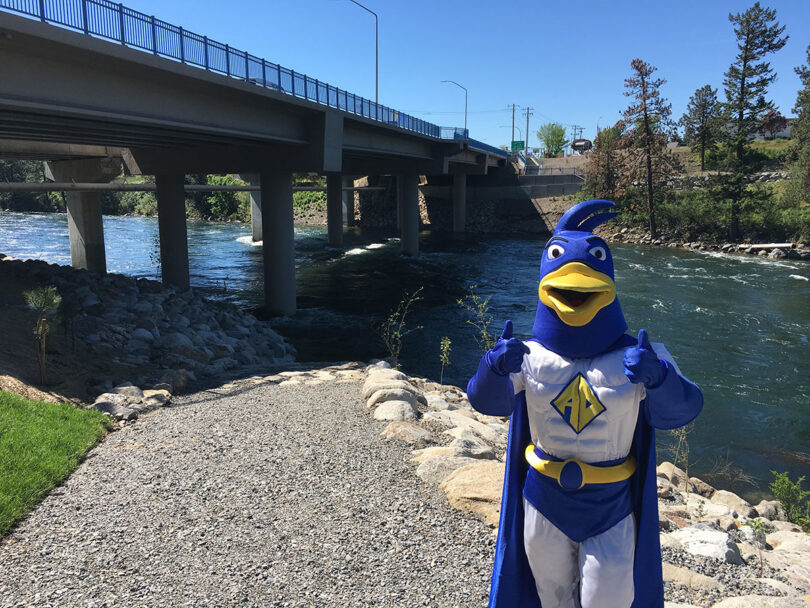Discharge – Recharge
Groundwater Discharge
Eventually, groundwater comes to the surface. It may be pumped from a well that feeds it through a garden hose or faucet in your home. Or it may flow into streams, rivers, lakes, marshes, or oceans as “discharge.”
Discharge from groundwater contributes to the flow of surface waters in rivers, streams and can fill lakes. For example, The Spokane Valley Rathdrum Prairie Aquifer discharges into the Spokane River. One discharge location is west of Sullivan Road. You can feel the water temperature drop as the cold aquifer water enters the river. In the hot summer months, aquatic life in the Spokane river depend on aquifer discharge to maintain healthy water temperatures..
Aquifer Recharge
An obvious question is
Do aquifers ever run dry? … or do they continue to get more water?”
The answers are “YES” and “YES.”
Groundwater supplies can actually run dry when the amount pumped to the surface by wells lowers the water table or when there is not enough recharge (thus making the zone of saturation smaller and lowering the water table). Groundwater supplies are replenished by rain and snowmelt that occur each year. We call this “recharge.” Water from melting snow and rainfall seeps into the soil and percolates down into the saturated zone. Places where this happens are called recharge areas. In the summer and fall months, recharge areas may appear as dry land. In the late winter and spring, the same areas are full of water that will eventually percolate down into the saturated zone of the aquifer below.
Climate changes are resulting in more variability in the amount of snowpack and when the snow melts. Earlier snow melt and higher temperatures contribute to less water in the river and more demand placed on pumping water from the aquifer.

